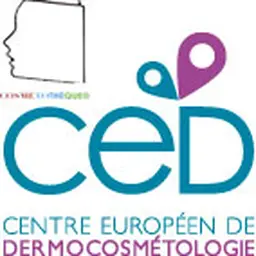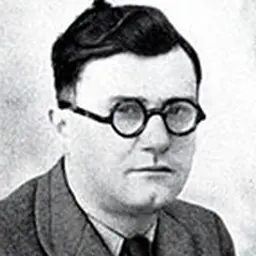
Among the operators in the nail polish world, French companies occupy a special place. Among them, Fiabila is an essential reference and we wished to retrace with its founding president, Pierre Miasnik, the saga of this beautiful adventure and the bases which currently federate according to him this field of activity.
Who are you, Pierre Miasnik?
I started in the cosmetics industry at the end of the 60s, working with Kolmar Cosmetics Europe, a company created by a visionary character, Daniel Steinfels. Kolmar Europe is licensed from Kolmar USA, which was in its time the leader in the subcontracting of make-up. Subcontracting at the time was considered a tertiary activity, often oriented towards economic rather than qualitative approaches. Mr. Steinfels did not have that vision. Engineer by training, he had the view that cosmetics had to respect a certain number of rules. Let us recall that at that time, cosmetic regulation was embryonic. One of the first projects I worked on was to market eye shadows in Italy that only contained authorised products, whereas competitors at the time did not seem concerned about these constraints.
So my first experiences took place in a context where ethics played an important role. For us, embellishment had to be carried out while respecting the support, i.e. the cutaneous physiology.
I have remained very faithful to these ethical rules and I will always refuse compromises on quality afterwards. In my opinion, our profession, more than ever, is that of a long-distance runner rather than a sprinter.
Among the companies I had as a client was Henry Marcy, which was the first to sell blister makeup in hypermarkets. This very innovative company, for example, had decided to put a demonstrator at the head of the gondola to explain its make-up products. This episode marked me and in particular the indifference of many towards innovation. At that time, I still had a pronounced taste for innovation and the search for excellence.
After the death of Mr Steinfels, the management of the Kolmar Europe Group changed. At the same time, philosophy has evolved considerably towards different values. The group had several subsidiaries in Europe, France, the United Kingdom and Germany (Wiesbaden). I am not satisfied with the new roadmap. I then decided to leave Kolmar and, in 1974, I returned to Pyraline.
This brand operates within a group of coating companies, Pyral for magnetic tapes, Pyrolac for paints and Pyraline for nail polishes. Pyraline's property was in the hands of the Tourin family, one of the shareholders of the Pyral group. Mrs. Tourin then buys the comedy company Docteur Faust and sells Pyraline to Mr. Robert Lesieur. Due to orientation difficulties, the company will be sold.
And Fiabila, in all this?
We are in 1977 and I decide to create my own business based on what I have learned from these different experiences. His name will be Fiabila.
The choice of the name of the company is significant, and represents the credo of this company. This is a way to highlight the main promise we wanted to develop: reliability.
My career in the make-up world had led me to note that the quality level of certain products was very low, particularly nail polishes, which prompted me to take this niche. Very quickly, I decide to give priority to customer expectations over technological possibilities, intuiting that this will be a key factor for progress and market gain. My analysis is simple, there is a market, a demand, but the offer is not satisfactory, I would be the one who will satisfy it! The reason was that my analysis had led me to identify that quality, in the broadest sense of the term, in terms of deadlines, quality and price or compliance with specifications, was a central point that was mistreated by all operators in the sector.
How was the market organized at that time?
The market in the 1970s was still dominated by three American companies, Tevco, Kirker and Durlin. One of the main players in this industry at the time was Abe Rosenbaum, which had a double hat, one at Kirker, the other at Durlin, the two companies that dominated the nail polish market in the United States. At the end of the Second World War, Abe Rosenbaum organized the supply of European markets from American sourcing. The varnishes were sedimenting. Mearl's patents on non-sedimenting varnishes in the United States in the 1960s had not yet been optimized. The first stage of non-sedimentation led to the first products of uncertain quality with very high viscosities, too high, interfering with the application.
Tevco will be transferred to SNPE. This company, which manufactures nitrocellulose sold to various customers around the world, wants to set up in the United States. Following marketing problems, the supply will evolve towards collodions, which will quite naturally lead the SNPE to produce nail polishes. Purchase of TEVCO and Durlin upon the death of Abe Rosenbaum.
Fiabila's strategy will be to promote product stability and quality.
For us, the qualitative improvement was based on several points: non-sedimentation, elimination of syneresis, improvement of gloss, maintenance of gloss on the nail, reduction of drying time as well as other aspects including ease of application.
The regulations got involved in these issues, framing a number of points much more precisely, and leading to the need to review certain items on the form. The main evolutions are: the suppression of toluene, formaldehyde-based resins, DBP, certain pigments, the replacement of organophilic clays on the basis of animal fats, etc. Once started, this search for qualitative improvement has no end. For us, it remains a topical subject treated by a team of some 30 people in France alone.
In Europe, who were the operators?
Promoter in Brussels, whose factory was moved to Luxembourg
- Pyraline in France
- Fiabila from 1977.The SNPE, which operated first under this name, then under Durlin
's name - ATC in Great Britain.
The use of nitrocellulosic bases produced in Europe began in the early 1980s. The emergence of these basic qualities will be under pressure from various events, both economic, but especially associated with the search for qualitative improvement under pressure from brands, dissatisfied with the supply of American origin. We will strongly support this trend. It was at this time that we began to work hard on improving quality, by greatly strengthening controls and favouring a logic of proximity, although this last factor is not the most decisive, since today we provide bases all over the world. But then he counted.
So how does the quality of products made in Europe compare with those made in the United States?
Under various constraints, particularly regulatory in Europe, making the FDA no longer the body that sets the pace for the world, we had to implement significant qualitative research to improve the products we supplied. All this allows us to affirm that European quality has far surpassed American quality. That is still the case today.
When we set up in the USA at the beginning of the 2000s, for example, we had a difficult period during which our products were systematically refused because they were too expensive even though they met much higher quality criteria than those of the American supply.
Our US plants now produce a much improved level of quality compared to competing local products.
How do you maintain your performance?
The approach I learned at Kolmar continues to be the basis of our philosophy: continuous improvement. Our laboratory, where a multidisciplinary team works, allows us to constantly improve our products.
We are investing more than 12 million euros on the Maintenon site in order to guarantee optimum quality, having integrated strong material flow constraints, absence of flow crossings and drastic reduction of accidental contamination risks.
We recently bought a factory in Brazil to manufacture varnish.
Where are you at?
Nitrocellulose continues to be a reference substance, forming a glossy, hard, permeable film, which offers a very satisfactory price/quality ratio, simply difficult to manufacture. Our efforts therefore continue to be directed towards improving the quality of solvent-based varnishes, by permanently eliminating residual monomer levels in the polymers we use.
And water-based varnishes?
A person has been dedicated to this project for many years. We have been working on water-based varnishes for over 15 years. We have filed several patents. We have so far achieved results that are quite interesting. The products obtained, whose qualities are satisfactory, are removed with soap and water.
We are also working on new polymers. This is undoubtedly the future.
And the other varnishes?
We were interested in gel varnishes based on UV-curable monomers, but our enthusiasm was a little dampened by certain safety aspects. Our observations lead us to believe that these varnishes are very allergenic, occlusive, strongly modifying the behaviour of the nail in its ecosystem. According to information I have, the number of consultations associated with these products has increased significantly in recent years. On the other hand, we have developed varnishes containing oligomers that can be crosslinked with natural UV rays and comply with the new European cosmetic regulations.
How do you analyze the nail polish and Nail Art boom?
For various reasons: it remains a very affordable product, with very easy access, but it is above all a product whose result is permanently visible, the hand is the part of the body that the woman sees at all times. The effect is noticeable, immediately and lastingly.
At the same time, the colour proposal was greatly broadened, making it possible to envisage unexpected things. I remain fascinated by the appeal that colour has on a female audience. When you put on the table several colors of varnish, very quickly, you can tell them anything, they are obsessed by the colors that are in front of them.
In my opinion, varnish is also an anti-ageing product par excellence. It hides the yellowing and streaking of the nail and mechanically strengthens it. Like all make-up products, it contributes to psychological well-being.
Asia and varnishes
We are now established in Asia. Local processors also use thixotropic bases and pigment bases that we supply to them. One of the main obstacles at the moment continues to be prices, too low in China.
The restriction of space in Japan is due to regulatory conditions that make local manufacture extremely difficult. We send bulk goods that are packed locally.
There is a local operator, Assanuma, which, to my knowledge, is the only local manufacturer.
In India, we have had a factory since the late 1990s and we have just built a second one. Locally manufactured products are of satisfactory quality.
Which products impressed you the most?
Colours first and foremost. At the beginning, we repeatedly matched certain colours, either from the Dior range, the Leather shade in particular, or colours from the Revlon range. Then things focused on the mythical shade of Saint-Laurent, that special fluorescent fuchsia, on the 19th. But the shades that impressed me the most are from the Chanel range. First of all the "Flamme Rose" shade, a very Chanel pink. Then especially the"Black Red". Closer to us, always with the signature of this brand, the hue"Particulière".
Chess??
Among the biggest failures are of course the automatic varnish applicators, none of which have really worked to date.
I particularly remember the launch of Nouvage in the United States. This was a resounding failure, following a poor consideration of the tightness of the packaging.
But apart from these very localized incidents, we have never experienced very large flops in terms of varnish quality. Major problems have always been associated with packaging and packaging elements.
A funny anecdote?
In the 1990s, one of our customers in the Middle East presented me with a low-quality bottle with a"Loncôme" label. In response to my question if this was not a problem, I was told that local consumers were not reading these characters well.
Interview by
Jean-Claude Le Joliff







